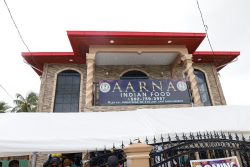Almost two months to the day after the World Bank had staged its October 25-28 forum on the subject of Data Analytics for Anticorruption in Public Administration, in which it had made some pointed observations about the nexus between corruption and poverty in poor countries, the Stabroek News published in its December 23 issue an article headlined “Education Ministry signed contracts for over $15 million before Internal Tender Board’s approval.”
The content of the article had to do with, not one, but a series of blatant irregularities in the official handling of a contract “for repairs to the Queen’s College living quarters,” a modest assignment in monetary terms, as state contracts go.
The article is worth reading because of its articulation of what continues to be the flippant manner in which political administrations in our country ‘play monopoly’ with public monies and lawful procedures, in this instance, seemingly in pursuit of the dispensation of what appears to be a political favour, even as government continues to trumpet the virtues of responsibility, accountability and good governance.
What is of particular note here is the fact that Minister of Education Priya Manickchand seemingly didn’t even trouble herself to concede that this outrageous fast-tracked ‘green-lighting’ of the Queen’s College Living Quarters project took irregularity to a bizarre extreme, contemptuously upending barriers to such irregularities that are set out in the Procurement Act of 2002. Not only, it seemed, was this an attempt to fashion an absurd acceleration of the contract award in question, but also, again seemingly, to perpetrate an unexplained and blatant anomaly in the disbursement of public funds.
The particular anomalies are sufficiently glaring, sufficiently absurd, to merit articulation here. First, the QC Living Quarters contract was signed “on December 2, 2020 some 29 days before its award.” That, in the real world, raises compelling questions about the substantive legitimacy of the contract. Secondly, “the contract was signed for $1.982 million, $49,139 more than the awarded sum. Here again, there appears to have been no available explanation (at least not a publicly available one) for the ‘top up’ to the substantive contract sum. Thirdly, “the Superintendent of Works certified the works as satisfactorily completed on December 28, 2020, three days before the award of the contract” and the “full sum” of the contract payment approved for payment on December 17, 2020.” Is this for real? How on earth do we account for this travesty?
It the blatancy of these astounding irregularities extends into mind-boggling proportions, the Minister’s decision to engage the media on the matter without, by her own admission, first looking internally (into her Ministry, that is) for a plausible account of these remarkable anomalies, takes things to an altogether different level. “I cannot remember all of the details right now but there is an explanation even though I might not be happy with it” is what she told the reporter with whom she spoke. Light years from ministerial, to say the least. By opting to engage a section of the media on a matter that had raised serious accountability and procedural questions, including ones that had to do with the disbursement of public funds without, by her own admission, first, sitting down with the Ministry’s Permanent Secretary, the Minister fell woefully short of what one would expect to be the minimum level of application in a matter that had clear and unquestionable implications for considerations of public accountability.
Going forward, one feels that these are not matters that can be brushed aside without wondering whether this particular occurrence is not a microcosm of a far bigger problem that will, in the longer term, cause us, going forward, to fall into an even deeper abyss of greater disregard for accountability, where we become even more comfortable with the notion that corruption can exist cheek by jowl with the responsibility of managing the resources of the state.









